Being a multimedia framework written by the VideoLAN project, VLC acts as a free and open-source media player for multiplatform: Windows, macOS, Linux, BeOS and so on. It supports playing of diverse audio files (AAC, AC-3, DV Audio, FLAC, MP3, Speex, Vorbis, etc.), video files, and even DVD movies. What differs it from other players is that it is totally free.
Apart from these fundamental features as a media player, VLC can help users to perform somewhat editor-like task such as adding audio tracks to video. For example, if your source video file has no background sound, you can merge audio and video in vlc. Or if you are not happy about the original audio track, you can replace it with another audio file click on Play.
In the following paragraphs, we'll discuss how to add audio track in VLC as well as how to save the file afterward.
Part 1: How to Merge Video and Audio in VLC (No Permanent Save)
1. Go to Media > click Multiple Files, then a second window will pop up > click Add.
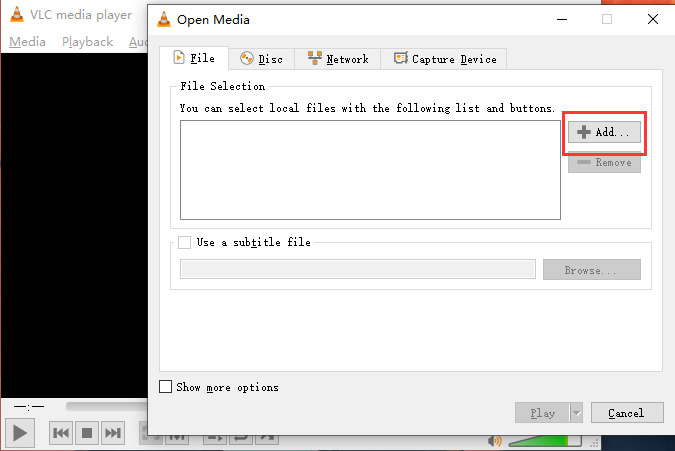
2. Load the target video. Tick Show more options and Play another media synchronously. Then click Browse to open another window.
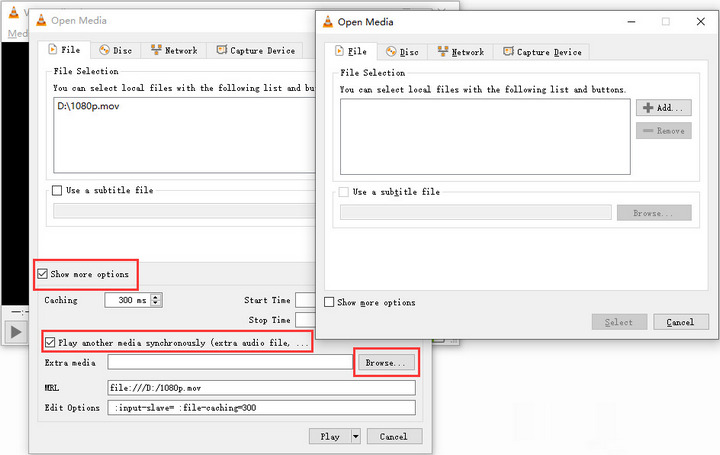
3. Click + Add on the second Open Media window > load the audio files that works on the video selected before.
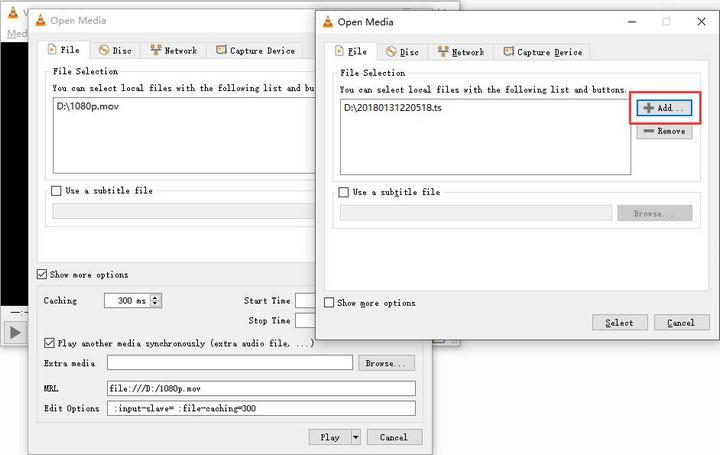
4. Click Select on the second Open Media window > click Play on the first Open Media window.
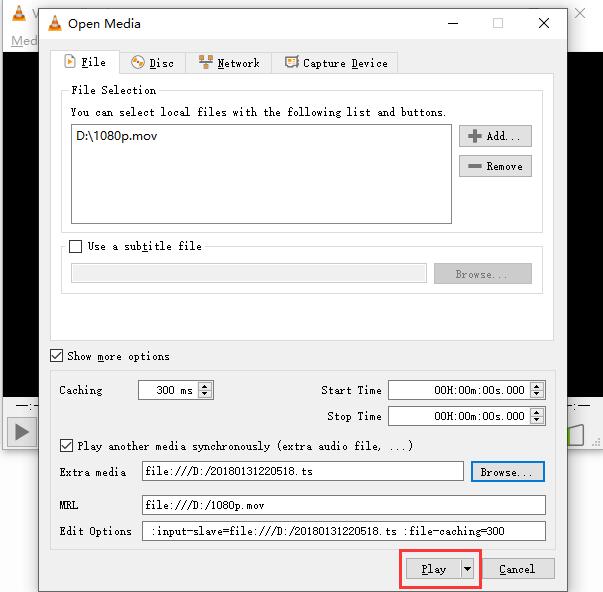
5. Go to Audio > Audio track > Track 2. Then the audio files will be added to the video. And you can overlay or replay the original sound.
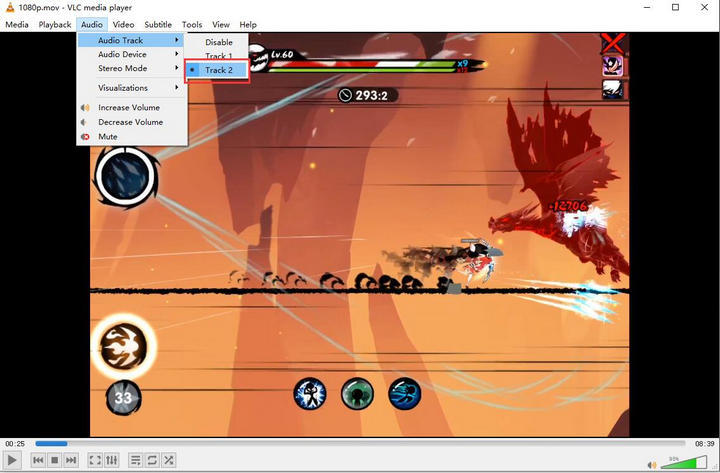
Repeat the steps above, and you can merge audio and video in VLC.
Drawbacks of This Method to Add Audio Track in VLC:
- It can help add sound to a video, but cannot save and output it for other uses.
- Problems such as no sound and subtitle errors also appear sometimes.
- VLC can not help with the playback of M4V or M4A files on Mac computer.
Part 2: How to Add Audio Track in VLC (Saving as a New File)
If you want to save the video file with background music afterward, you need to disable the audio in the video, and then replace it with an external audio file. It is more complicated than the method above but works well. Now follow the instructions below and try to add a song to your video by using VLC.
1. Open Media > Convert/Save to add a video file to VLC. Click the Convert/Save button on the lower side to proceed.
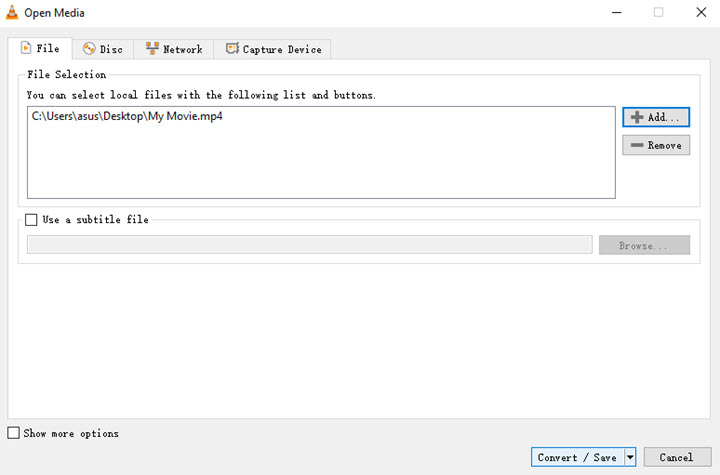
2. Click the wrench icon in the Profile option. Click Audio codec and uncheck the box before Audio to disable the original soundtrack. Hit the Save button to get back.
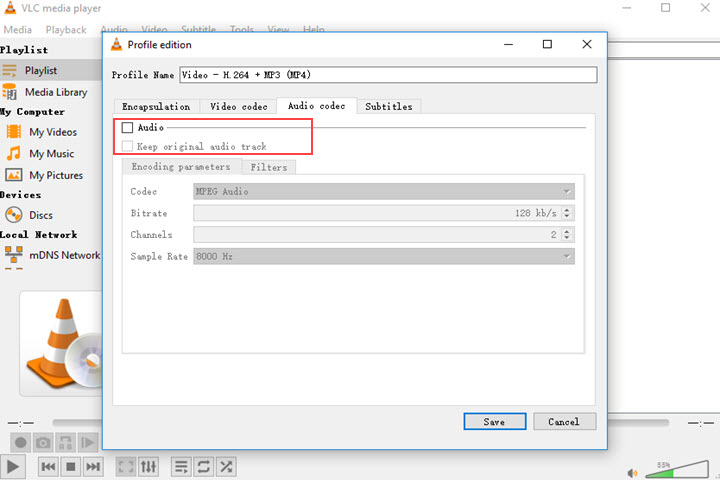
3. Select a folder to save the video and start to export the video.
4. Import the video without audio to VLC. Tick Show more options > Play another media synchronously to load the music to VLC.

5. Open the drop-down menu of the Play button at the bottom and choose Convert/Save.
6. Click the wrench icon to open audio codec options. Then enable Audio and save.
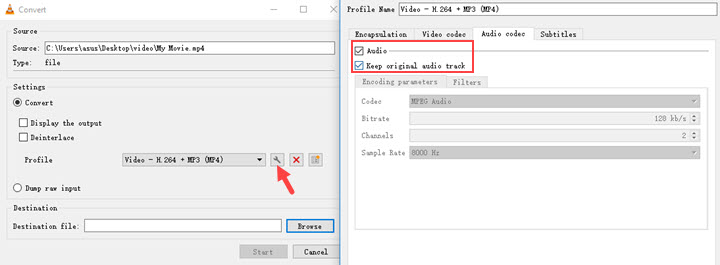
7. Browse a destination folder for your video. And add .mp4 to the file name. Hit Start to combine audio and video in VLC and save it to your computer.
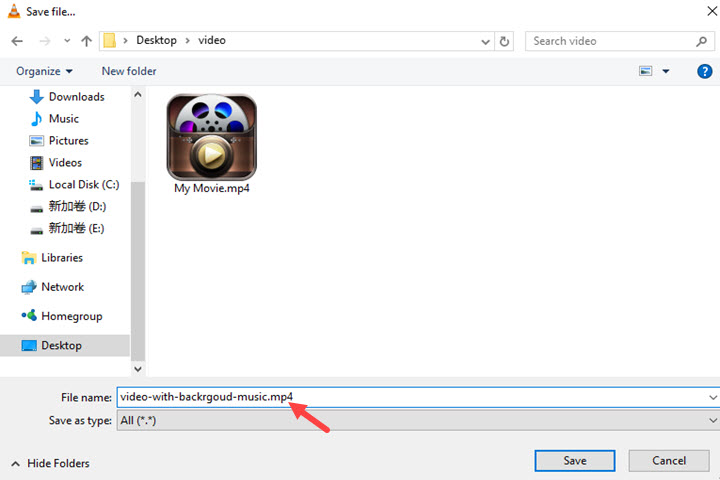
Drawbacks of This Method to Merge Audio and Video in VLC:
- It causes quality loss after re-encoding the video several times.
- VLC lacks some crucial features like the adjustment of the audio codec, bit rate, sample rate, etc.
- VLC cannot mix external audio with the original sound. It replaces the audio in a video.
Notes for the Methods Above
- VLC is not primarily a video editing tool. It's possible to encounter synchronization or encoding issues when merging files, especially for critical projects.
- The "Show more options" checkbox and "Play another media synchronously" option are crucial for adding the audio file.
- The process might slightly vary depending on your VLC version.
- Consider using dedicated video editing software like VideoProc Vlogger, which we will cover in the next part, if you need more control over quality and synchronization.
Part 3: How to Merge Audio and Video with a Free Video Editor
VLC is absolutely an outstanding media player for you to play diverse media files. As for video audio editing, it can do some simple tasks, and works not bad indeed, but not perfect enough.
If you intend to add sound to a video and do refined editing to get a better outcome, we recommend you to turn to professional video editing software, for example, VideoProc Vlogger.
VideoProc Vlogger is a free non-linear video editor from the Digiarty Software Inc. It is a simple but versatile program compatible with Windows and macOS. With it, you can easily add audio to video, without any issue that VLC can bring to you. Besides, you can use it for more operations on the audio files, such as adding effects to the audio, enhancing sound quality, and so forth. And you can access all these features for free, just like VLC does.
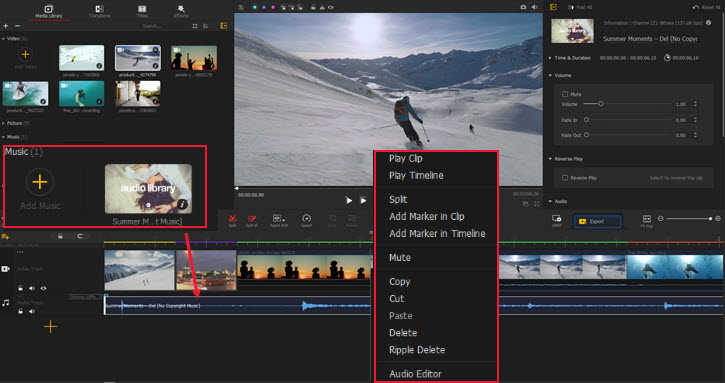
If you wonder how exactly VideoProc Vlogger helps add audio to video, you can check this detailed guide.
Conclusion
VLC Media Player offers basic functionalities to add or replace audio tracks in video files, but it has notable limitations. The "Open Multiple Files" method allows temporary playback with an added audio track but does not save the combined file. The "Convert/Save" method does enable saving the merged audio and video, but this process involves re-encoding, potentially leading to quality loss. Additionally, VLC lacks advanced audio editing features, making precise adjustments difficult.
For users seeking more refined audio editing capabilities, higher-quality output, and greater control over the final product, dedicated video editing software like VideoProc Vlogger can be a much better alternative. This tool provide advanced options for audio adjustments, effects, and export settings, ensuring a professional result without compromising quality. Therefore, while VLC can be a quick solution, professional video editors are recommended for serious audio-video editing tasks.









